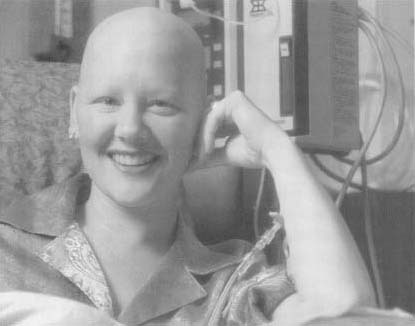Chemotherapy
Treating or preventing any disease or medical condition with chemicals or drugs is known as chemotherapy. Many people now connect the word chemotherapy with cancer treatment, but chemotherapy was first developed for other infectious diseases, such as syphilis (a sexually transmitted disease) and diphtheria (pronounced "dif-theer-iyah"; an infectious disease in which a membrane—or thin cover—forms, usually in the throat). Chemotherapy drugs are systemic medications, that is they act throughout the entire body. The first chemotherapy drugs, or agents, were the sulfa drugs, or sulfonamides, which began to be used in the 1930s. Penicillin and other antibiotics came out in the 1940s. Hormones began to be used as chemotherapy agents in the 1950s.
The "Magic Bullet"
In the late 1800s two German bacteriologists, Emil von Behring (1854-1917) and Paul Ehrlich (1854-1915), produced diphtheria antitoxin, which was first given to human patients in 1891. The antitoxin made the recipient immune to catching the infectious throat disease. Then Ehrlich experimented with dyes and discovered that certain dyes stained certain types of cells. Ehrlich succeeded in staining the cell responsible for causing the contagious lung disease tuberculosis. Identifying the cause of infectious diseases was necessary before drugs could be developed to control or cure them. Ehrlich eventually discovered an arsenic compound that cured the sexually transmitted disease syphilis. He also discovered a dye that treated African sleeping sickness.
Ehrlich believed that "magic bullets" could be produced, substances that would only affect the invading cells that caused disease, but not harm the body as well. Ehrlich's work is credited with starting the age of chemotherapy, but the "magic bullet" has been harder to realize because chemotherapy drugs have become stronger and more toxic.
Viral Disease Targeted
Acyclovir is the first chemotherapeutic agent to be effective against viruses. Two American biochemists, George Hitchings (1905-) and Gertrude B. Elion (1918-), produced acyclovir in the early 1950s to treat herpes infections. For their discovery, Hitchings and Elion shared the 1988 Nobel Prize for medicine with the British pharmacologist Sir James Whyte Black (1924-).
Other viral infections benefiting from chemotherapy are influenza (flu) and Acquired Immune Deficiency Syndrome (AIDS). In the case of AIDS, many drugs have been tested, but the United States Food and Drug Administration (FDA) has only approved of two chemotherapies: azidothymidine (AZT) and dideoxyinosine (DDI). AZT and DDI stop the human immunodeficiency virus (HIV) from reproducing, and DDI is used for AIDS patients who cannot tolerate AZT.
Treating Cancer
The word cancer is actually just a general word for the usually fatal, aggressive diseases that are part of a larger class of diseases, the neoplasms.

Systemic Action
Chemotherapy has proven to be a good treatment choice for many cancers because the drugs act systemically. The drugs may also be combined with other drugs and with radiation and/or surgery. Recovery from the very aggressive cancers may not always be possible, but chemotherapy often extends the patient's useful life and may slow down the cancer's rate of growth. Anti-cancer drugs tend to be highly toxic—to cancer cells as well as healthy cells—and they produce severe side effects, such as nausea, tiredness, and hair loss. Combining drugs seems to sidestep the problem of resistance to therapy, which is more likely to occur when one drug alone is used. Chemotherapy drugs have also proven to be as effective as bone marrow transplants for children with acute myeloid leukemia, which sidesteps the difficult problem of finding a suitable bone marrow donor.
Sources for chemotherapy agents have been found in plants, such as colchicine from the autumn crocus, vincristine and vinblastine from the pink periwinkle, and taxol from the bark of yew trees. The alkaloids found in these plants seem to stop cancer cells from reproducing. Taxol was discovered in 1978 and began clinical trials in 1993. Anthracyclines are another class of naturally occurring substances that are useful against breast, lung, thyroid, stomach, and other cancers. Antibiotics are another treatment option. Female reproductive cancer and brain tumors are among the cancers that show sensitivity to antibiotics.
[See also Hormone ; Penicillin ]